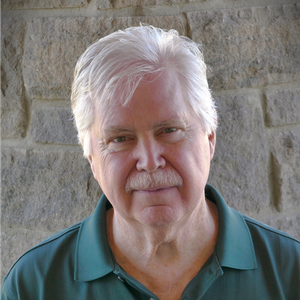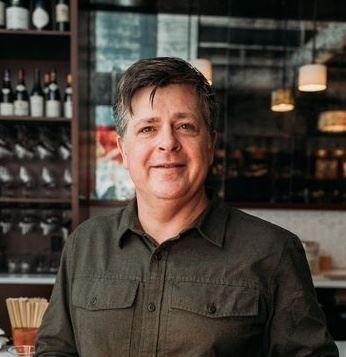Meet Our 2024 Speakers
Our fabulous speaker lineup includes: Jay Justice, Arleen Bessette, Alan Bessette, Richard Tehan, Tim Pfitzer, Jesse Akozbek, Curtis Hansen, Sarah Duhon, Bill Sheehan, Sidnee Obersingleton, Anna McHugh, Cameron Strouss
For Bios and talk titles see below!
Jay Justice | Amanitas of Alabama Jay Justice became enthralled with mushrooms and fungi while pursuing a graduate degree many years ago. After completing his graduate degree, Jay joined the North American Mycological Association (NAMA) in 1980. In 1982, he was instrumental in forming the Arkansas Mycological Society and participated in his first NAMA foray in 1985. He has been a prominent member of NAMA, and a well-known mycologist in the decades since. In 2011, Justice was the recipient of the Gary Lincoff Award for Contributions to Amateur Mycology, an award that is given each year by NAMA to recognize service performed by selected amateur or professional mycologists. He has been listed as a co-author on several research papers in mycological journals and he serves as one of the chief mycologists for the Missouri Mycological Society as well as a scientific advisor for the Arkansas Mycological Society, the Cumberland Mycological Society, and the Gulf States Mycological Society. Jay continues to serve as a lecturer and mushroom foray leader for mycological societies and mushroom clubs, particularly in the Southeast. He has recently co-authored the book Amanitas in North America, which was published in June of 2020. |
|
Richard Tehan
| Cordyceps of North America Richard Tehan grew up in upstate NY and attended Utica College, receiving a B.S. in chemistry. He obtained a Ph.D. in a medicinal chemistry program at Oregon State University College of Pharmacy, where he did his dissertation on drug discovery and chemical ecology in insect-pathogenic fungi in the lab of Dr. Kerry McPhail. Richard is currently assistant professor of biochemistry at Utica University where he teaches chemistry and biochemistry and conducts research on fungi. Research efforts are aimed at the discovery of new fungal species and new antibiotics and anticancer agents produced by fungi as well as the elucidation of the ecological roles of these metabolites. Richard has been a passionate mushroom hunter and photographer for fourteen years. He serves as scientific advisor to the Mid York Mycological Society, a mycology club based in Utica, NY. | 
|
Jesse Akozbek
| Forgotten Wild Food of Alabama From the moment Jesse took his first bite of bread made from acorns he foraged in his own backyard, he was hooked! Since then, there are not many moments you won't find him outside in woods and fields looking for wild food and herbs. He loves teaching as much as foraging itself! Jesse is known for breaking down complex subjects into bite-sized pieces that are approachable to all skill levels. You'll walk away with practical information that you can implement immediately! He is also an avid photographer and videographer which he uses to enhance and aid his teaching. You can find his work online on Instagram and YouTube on Feral Foraging, the foraging education platform he runs. Above all, he is passionate about foraging and wants you to be too. Join him to learn how you can form a deeper relationship with the natural world around you! |
Curtis Hansen
| Lichens in the Landscape Curtis J. Hansen is the Curator of Plants at the John D. Freeman Herbarium at the Auburn University Museum of Natural History. He has worked in herbaria for nearly three decades and has spent the past 25 years at Auburn University. He has a great love of native plants, natural landscapes, and lichens of Alabama and the southeastern United States. For over 20 years he has been collecting and documenting the rich lichen flora of Alabama. His interests also focus on herbarium management, vascular plant and lichen floristics, and outreach education about the natural world. He earned a Bachelor’s degree in Biology from the University of Utah and holds Masters degrees from Brigham Young University (Botany) and Auburn University (Biological Sciences). He is currently writing a book about the common lichens of the southeastern United States. |
Sarah Duhon | Fungi and Plant Blindness Sarah DeLong-Duhon serves as the president of the Prairie States Mushroom Club in Iowa (iowamushroom.org). She has 7 years of mushroom hunting experience, having started the obsession in college, and published her Master's thesis on fungal phylogenetics of Stereum. When not working, she is out in the woods taking pictures of pretty mushrooms or at home painting pictures of them. @sarahdelongduhon on Instagram. |
Bill Sheehan
| Seeing the Unseen: Insect Galls & Fungi Bill trained as an entomologist (PhD Cornell), researched biological control using parasitoids (insects that develop inside and eventually kill another insect), then started and ran national environmental policy nonprofits for 20 years. Afterwards, he got interested in fungi and the potential for citizen science to contribute to this hyperdiverse and mysterious world. In 2017 he co-founded Fungal Diversity Survey (originally North American Mycoflora Project) and was Board President through 2021. Since then, he has become fascinated with another realm that is ripe for citizen scientist engagement – insects in plant galls (some of which team up with fungi). Using iNaturalist and Gallformers.org, a website created by citizen scientists, he has logged some 650 observations with 180 identified to species – and enjoyed countless hours of fascination in the process. |
Sidnee Obersingleton
| Mushroom Dying; Exploring fungal Colors |
|
Alan Bessette
| Gasteroid and Similar Fungi of Eastern North America Alan E. Bessette, Ph.D., is a professional mycologist and distinguished emeritus professor of biology at Utica College of Syracuse University. A member of the North American Mycological Society, the Asheville Mushroom Club and the Gulf South Mycological Society, he has published numerous papers in the field of mycology and has authored or coauthored more than twenty-five books including: Edible Wild Mushrooms of North America, Mushrooms of the Southeastern United States, A Field Guide to the Mushrooms of the Carolinas, and most recently Polypores and Similar Fungi of Eastern and Central North America. Alan served both as a consultant for the New York State Poison Control Center and as the scientific adviser to the Mid-York Mycological Society for more than twenty years. He has been the principal mycologist at national and regional forays and was the recipient of both the 1987 Mycological Foray Service Award and the 1992 North American Mycological Association Award for Contributions to Amateur Mycology. |
|
Arleen Bessette
| Mechanisms of Spore Dispersal: Surviving Into the Future Arleen Bessette is a retired psychotherapist, as well as a mycologist and botanical photographer. She has been collecting and studying wild mushrooms for more than forty years. A member of the North American Mycological Association, the Asheville Mushroom Club and The Gulf South Mycological Society, she has published several papers in the field of mycology and has authored or coauthored more than fifteen books including: Boletes of Eastern North America, The Rainbow Beneath My Feet: A Mushroom Dyer’s Field Guide, Polypores and Similar Fungi of Eastern and Central North America, and the forthcoming A Field Guide to the Mushrooms of Georgia. Arleen has won several awards in the North American Mycological Association’s annual photography competition, including top honors in both the documentary and the pictorial divisions. Her mycological interests include dyeing fiber with fungi, mycophagy, and the interplay between fungi and consciousness. |
|
Anna McHugh | Wild Mushroom ID Foundations Anna McHugh is a wild mushroom nerd and educator from Raleigh, North Carolina. Anna shares her passion for nature and amateur mycology by filming beginner-friendly mushroom identification videos, leading mushroom walks, and making original myco-botanical art. |
|
Cameron Strouss
| Unsea: Toxin, Medicine, or Somewhere In Between.
Cameron is an herbalist, medicine maker, wildcrafter, and teacher dedicated to educating and empowering people in reclaiming health, community, and connection to the land through science based herbal medicine. She is the owner and founder of Deep Roots School of Foraging and Herbal Medicine and has been formally studying herbal medicine for 15 years. She has over 4,000 hours of Sciences and Herbal Education under her belt along with 9 years of clinical work. Cameron is a graduate of the University of Montevallo (with a Biology Degree), the Southeastern Institute for Traditional Herbal Studies and The Eclectic School of Herbal Medicine with her Clinical Herbal Certification and has been awarded her FH and RH (AHG) and is a Level 1 Aromatherapist. |
|
Tim Pfitzer
| TBA, Cooking demonstration |
|
.JPG)




.JPG)










.zip%20-%204-1.png)


